PROCESS
This section will include our initial ideas which we presented at the whitecard meeting, and then the preparations for the final presentation.
CONCEPT: We established that our concept was a focus on the progression of the locations in the script that also run in parallel to Orfeo’s psyche. Both representing physical spaces and psychological spaces, the design heavily focuses on the set changes and color shifts between each Act.
After collating our research, I drew my initial ideas & reactions. Ken and I both did this separately then came back together to merge our ideas. Right off the bat, it was clear we were both going for concrete column forms. However, I had high triangular forms while ken had short blocks of concrete. We combined both ideas. Additionally, I had most of the columns grouped together, while Ken had them spread out across the back & periphery of the stage which we also re-modeled together.
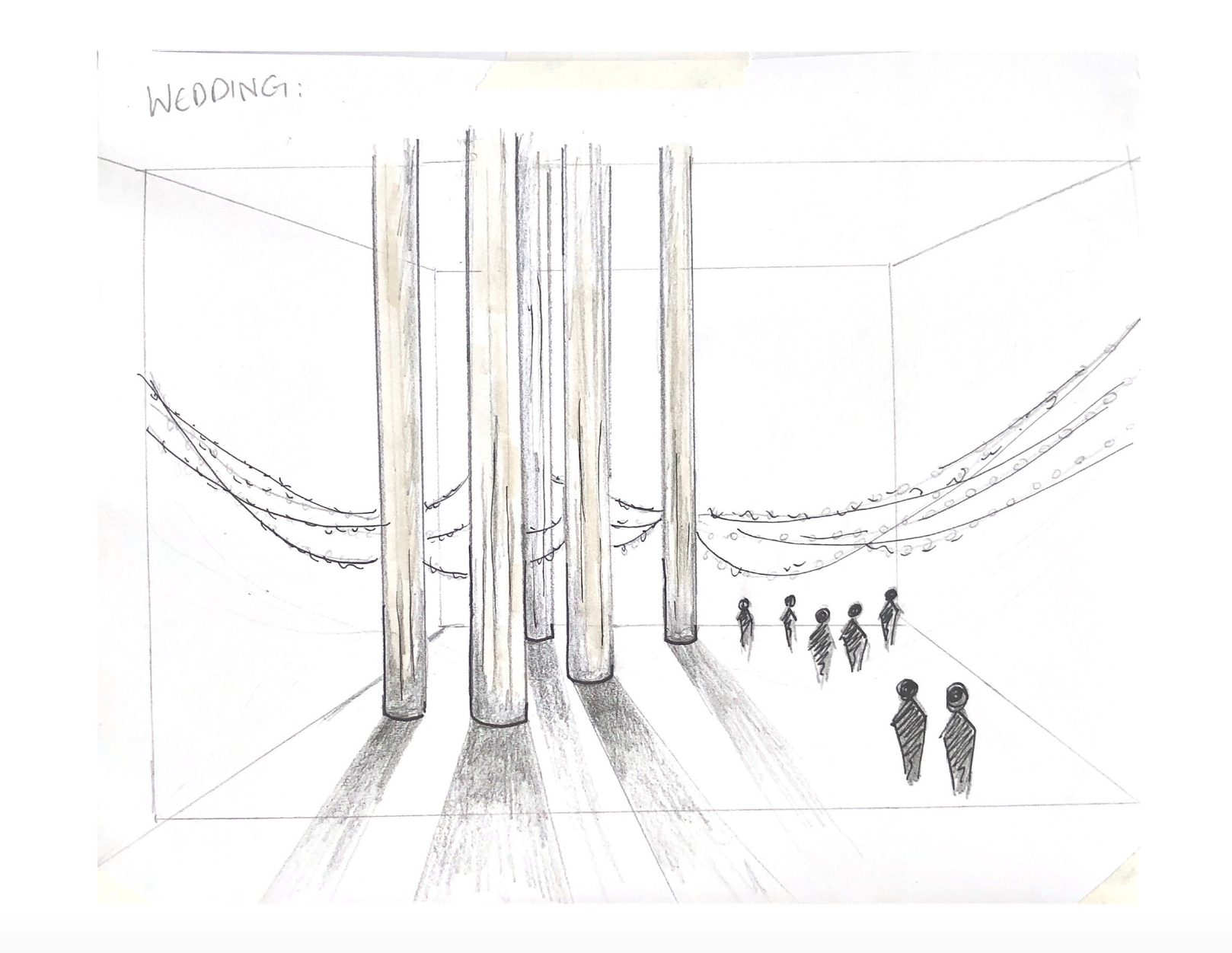
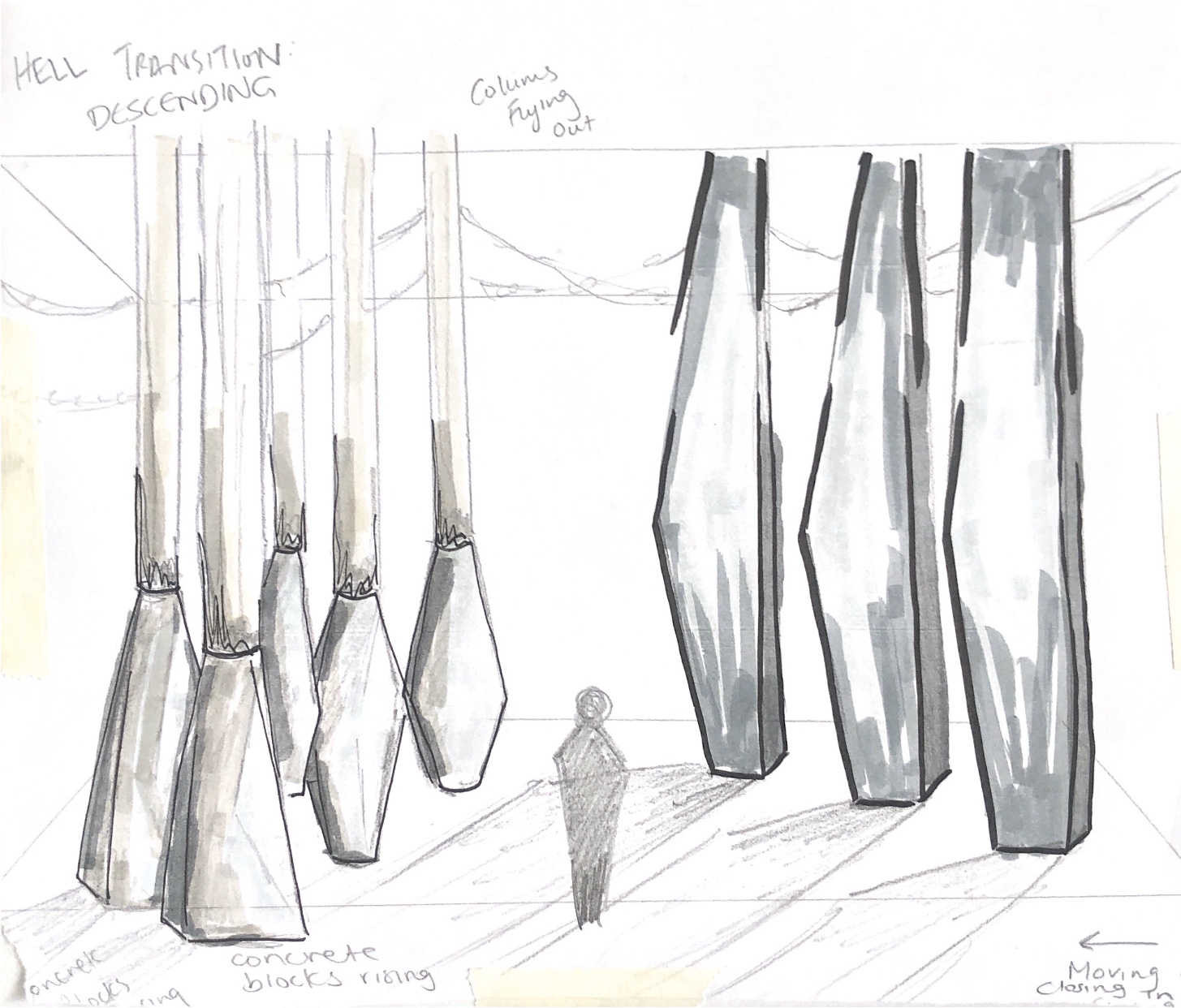

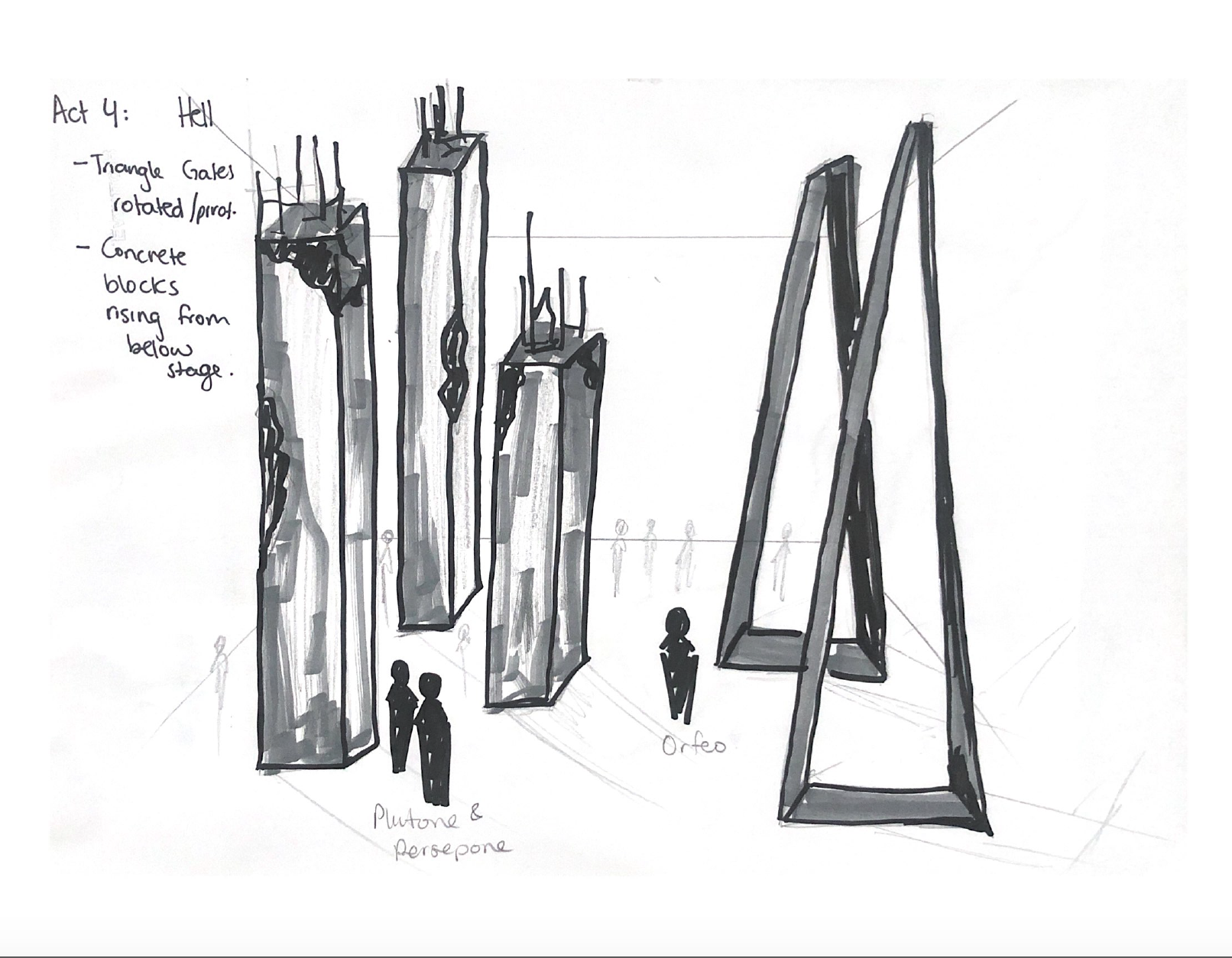
This is an initial sketch of when we tried to merge our ideas for the scenes in Hades. Having triangular columns as the gates of hell, and then deconstructed blocks of concrete.
After speaking to Anna, she directly told us that we have way too much movement in the set changes as well as too many contrasting shapes and textures that it all felt cluttered. She encouraged us to simplify the forms so that we can keep the integrity of our concept: the set changes & the color scheme.
When working with such a big and highly technical space like the Vienna State Opera, I admit that I got carried away. I wanted to do everything imaginable to make the most of the technical capabilities and the £100,000 set budget, which clouded my vision while designing. This was a learning experience about less is more, especially when looking at the creative direction of European contemporary opera.
Thus, we decided to simplify our movement to the fly rig, something that we were both familiar with. I modeled this on Rhino.
After speaking to Anna, she directly told us that we have way too much movement in the set changes as well as too many contrasting shapes and textures that it all felt cluttered. She encouraged us to simplify the forms so that we can keep the integrity of our concept: the set changes & the color scheme.
When working with such a big and highly technical space like the Vienna State Opera, I admit that I got carried away. I wanted to do everything imaginable to make the most of the technical capabilities and the £100,000 set budget, which clouded my vision while designing. This was a learning experience about less is more, especially when looking at the creative direction of European contemporary opera.
Thus, we decided to simplify our movement to the fly rig, something that we were both familiar with. I modeled this on Rhino.

Act 1 & 2: Thrace
Act 3 & 4: Hades
Act 5: Thrace & Apollo
The concept behind each scene was the Temple in Thrace, which then deconstructs in the set change as Orfeo’s entire world falls apart before his very eyes. Lastly, when he ascends back to Thrace, after losing Euridice again, the columns do not come back together. Only fragments remain since Orfeo’s world will never be whole again. At this stage, we had a tutorial with Freddie Lippi, the production manager, to check that this was all technically possible which she approved.
Now that we had designed the basic structures & movement of our set. We went to the special moments, which required a bit more research as well. The first thing was the Prologue. I had the idea to project a large-scale La Musica on holo-guaze as the wedding was being set up behind. However, this idea was quickly scrapped because it was a poor use of resources. Holo-gauze is very expensive and projection is a technical challenge which was not worth it for such a brief moment. It was not adding anything to the dramaturgy. However, we did decide to keep the idea of a gauze that we see the chorus preparing the wedding through (eg: stringing up fairy lights, lighting lanterns)
![]()
![]()
Now that we had designed the basic structures & movement of our set. We went to the special moments, which required a bit more research as well. The first thing was the Prologue. I had the idea to project a large-scale La Musica on holo-guaze as the wedding was being set up behind. However, this idea was quickly scrapped because it was a poor use of resources. Holo-gauze is very expensive and projection is a technical challenge which was not worth it for such a brief moment. It was not adding anything to the dramaturgy. However, we did decide to keep the idea of a gauze that we see the chorus preparing the wedding through (eg: stringing up fairy lights, lighting lanterns)


Secondly, we needed to design the boat that Orfeo crosses the River Styx on. In my research I mentioned that we were thinking of projecting water refraction textures, but again since there were no other points of projection it did not feel like a wise use of resources. Ken had the idea of designing a raft that the infernal spirits push. Meanwhile, I designed the material which is inspired by these installations using mirrors, aluminium, and acrylic. I also drafted the shape in these technical drawings. We spoke with Anna about health & safety, so we had to put a beam as a handle for performers who were standing on it while its moving.


Lastly, I had to design Apollo’s entrance and the shift as they ascend into heavan. I had a few ideas for this, one being a train in the costume that gets flown. However, this had major health & safety concerns as well as expenses to flamebar would not be worth it. So then I tried to convert the idea into set pieces creating clouds, but this was also abandoned since it did not match the previous aesthetic choices we made. We decided that the color story is a strong enough element of visual dramaturgy. To enhance it, I would dress the finale chorus to act as the clouds.
![]()
![]()
![]()
![]()
WHITECARD MEETING: we presented our research & initial ideas for the set, and the moodboards for the costume & lighting. We basically got full approval for the set, we just had to figure out the technicaliities and construction. I also got full approval for the costumes, I just had to illustrate them. All our points of concern with the scrapped ideas were also discussed and we fully abandoned them.
Another important moment is when Orfeo looks back and Euridice falls back into hell. Ken was designing this section. The idea was that Orfeo has a mirror on his back that Euridice shines a torch at and it creates a path for her. This turned into a costume challenge as I did not want the mirror to reflect light throughout the whole performance.Secondly, Ken wanted Euridice to fall through the trap door, which we decided to keep since we had simplified everything else. I was concerned about the health & safety, so I suggested that we have some infernal spirits to pull her down through the trap.
I also wanted a costume reveal with a gaping whole in his shirt as she rips the jacket off of him. I had a reference in my research but I decided to make a costume sample with embroidery. I later realised that the detail would not show from a distance anyway though, but I decided to keep the striking red color against a black & white environment.
I also wanted a costume reveal with a gaping whole in his shirt as she rips the jacket off of him. I had a reference in my research but I decided to make a costume sample with embroidery. I later realised that the detail would not show from a distance anyway though, but I decided to keep the striking red color against a black & white environment.
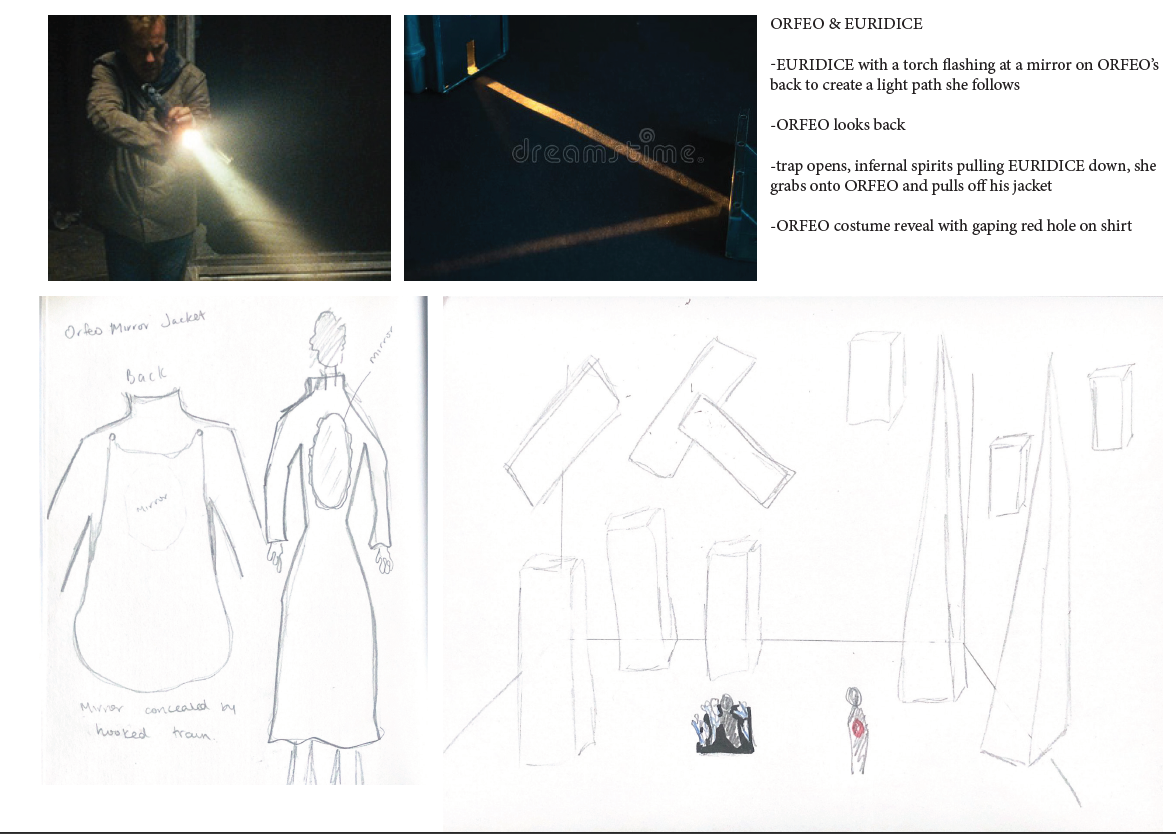



WHITECARD MEETING: we presented our research & initial ideas for the set, and the moodboards for the costume & lighting. We basically got full approval for the set, we just had to figure out the technicaliities and construction. I also got full approval for the costumes, I just had to illustrate them. All our points of concern with the scrapped ideas were also discussed and we fully abandoned them.
The next steps were really to put everything together. For the set I did technical drawings to determine the sight lines and also to finalise the design the columns. We also had tutorials with Anna to determine how they would be built to move in the way we wanted them to. I then made physical models of the column textures to go along with the digital modelbox, which you will see in the outcome.
![]()
![]()
![]()
![]()
![]()
For costume, I made a costume plot (which is something I did for the first time). I had never known what this was before, so to be able to practice making one for such a large-scale production was challenging and educational. There were no costume clashes.
![]()
![]()
![]()
![]()
I also mocked up a costume budget breakdown. Our total was £70,000 which I struggled to fill at first. I realised that I was sourcing as if for a fringe show, what I’m used to. I went to a local fabric shop when I was in Cyprus, and I enquired about prices and showed them my moodboards to get a sense of what fabrics would be best to achieve those styles. I am not a costume maker so enquiring specilaists was important. I learned a lot about fabric choices and quality as well as where to buy items like undergarments, shoes, and wigs for larger scale productions. My total spend was £69,992.59
![]()
![]()
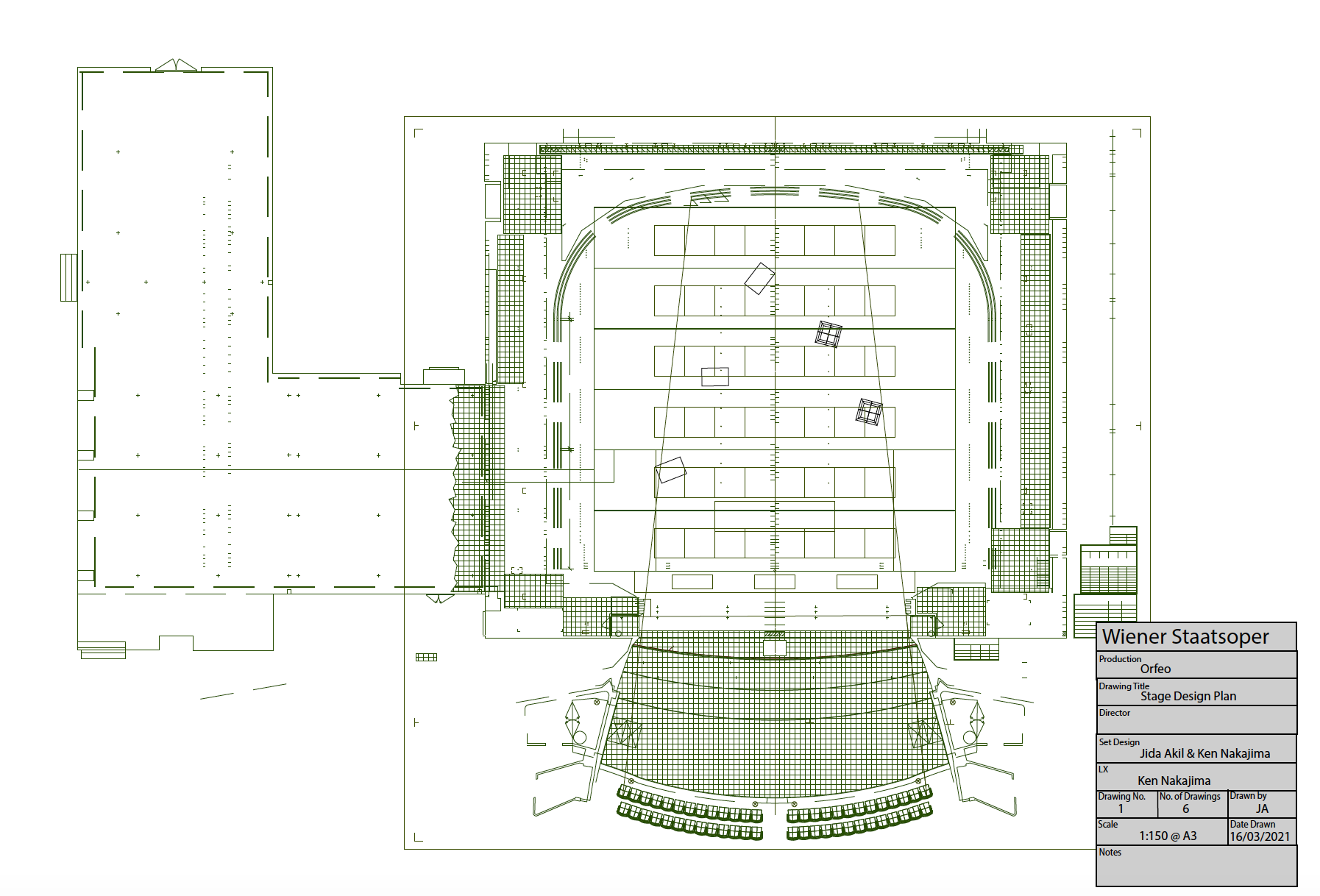
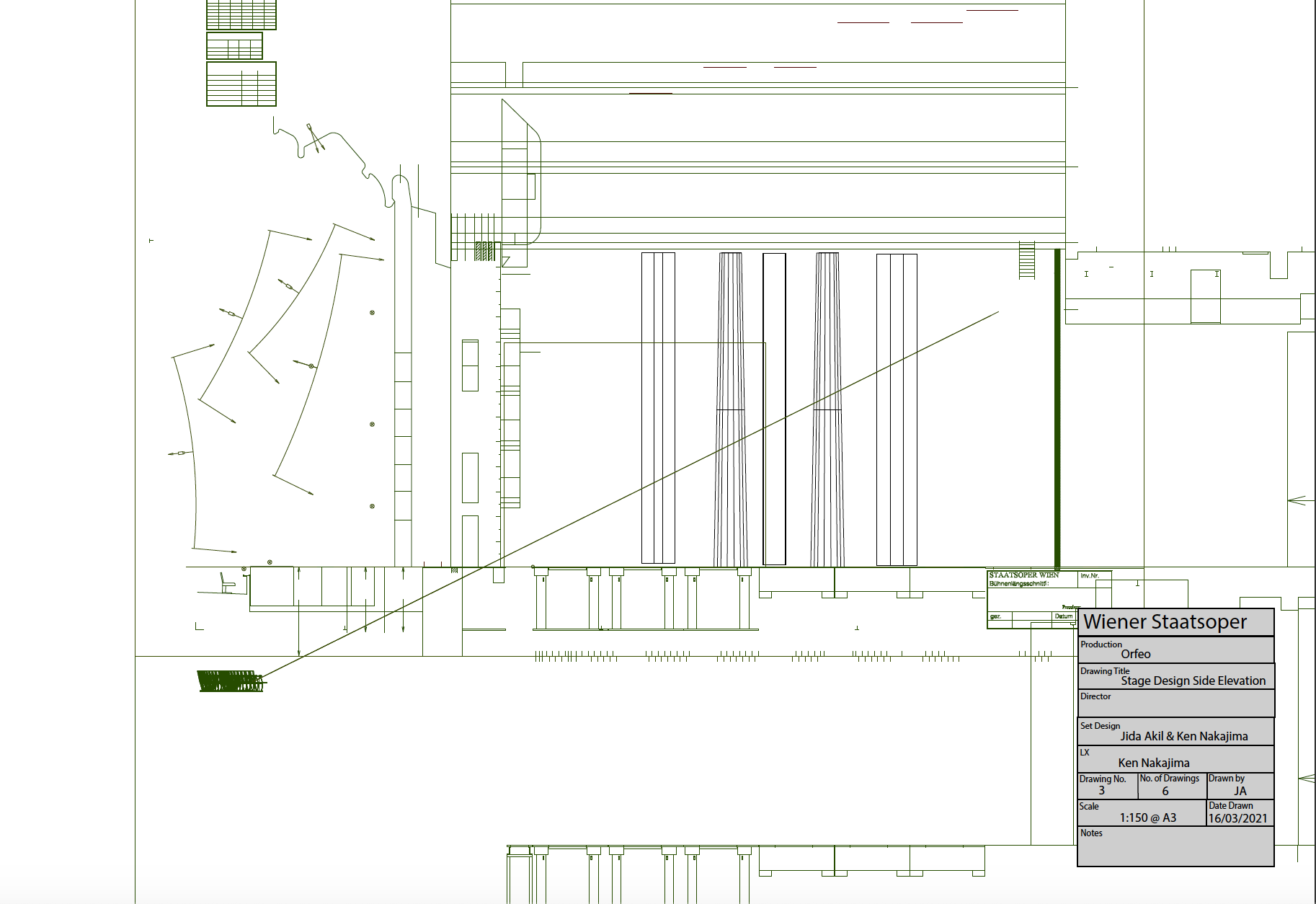



For costume, I made a costume plot (which is something I did for the first time). I had never known what this was before, so to be able to practice making one for such a large-scale production was challenging and educational. There were no costume clashes.


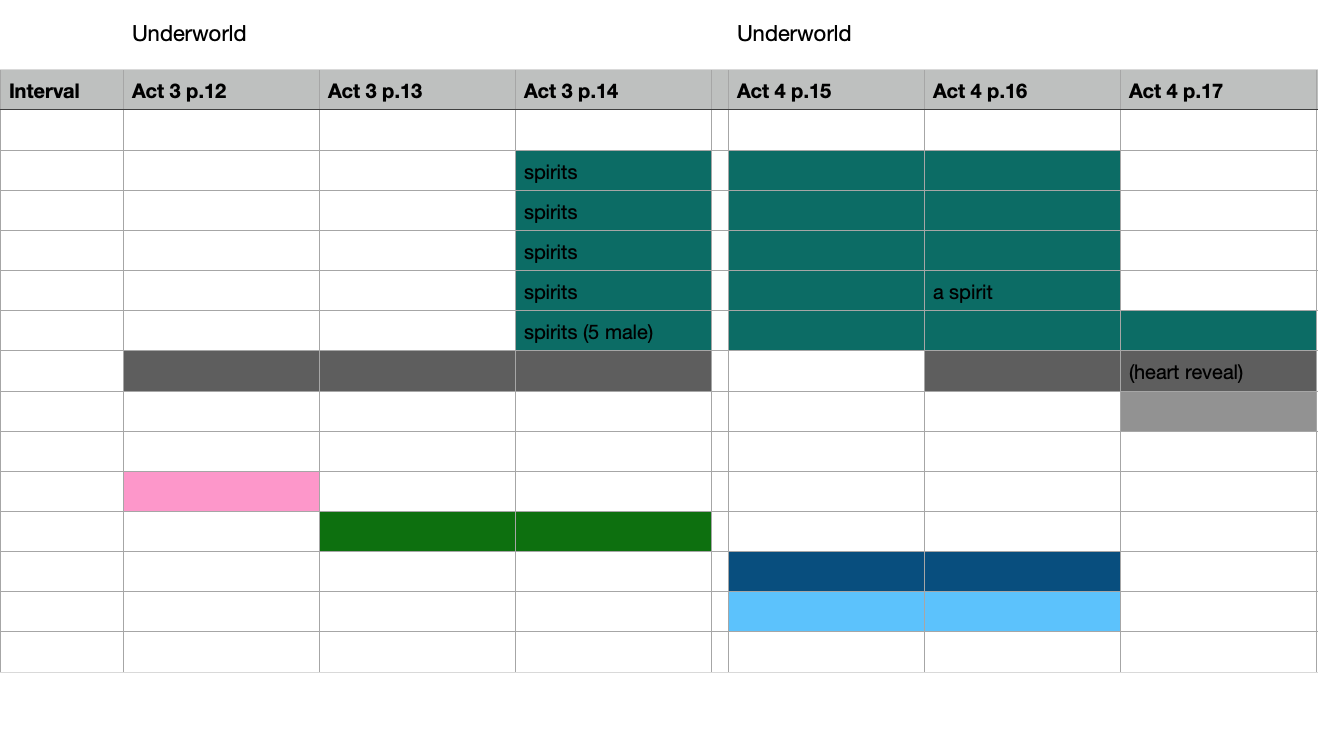

I also mocked up a costume budget breakdown. Our total was £70,000 which I struggled to fill at first. I realised that I was sourcing as if for a fringe show, what I’m used to. I went to a local fabric shop when I was in Cyprus, and I enquired about prices and showed them my moodboards to get a sense of what fabrics would be best to achieve those styles. I am not a costume maker so enquiring specilaists was important. I learned a lot about fabric choices and quality as well as where to buy items like undergarments, shoes, and wigs for larger scale productions. My total spend was £69,992.59

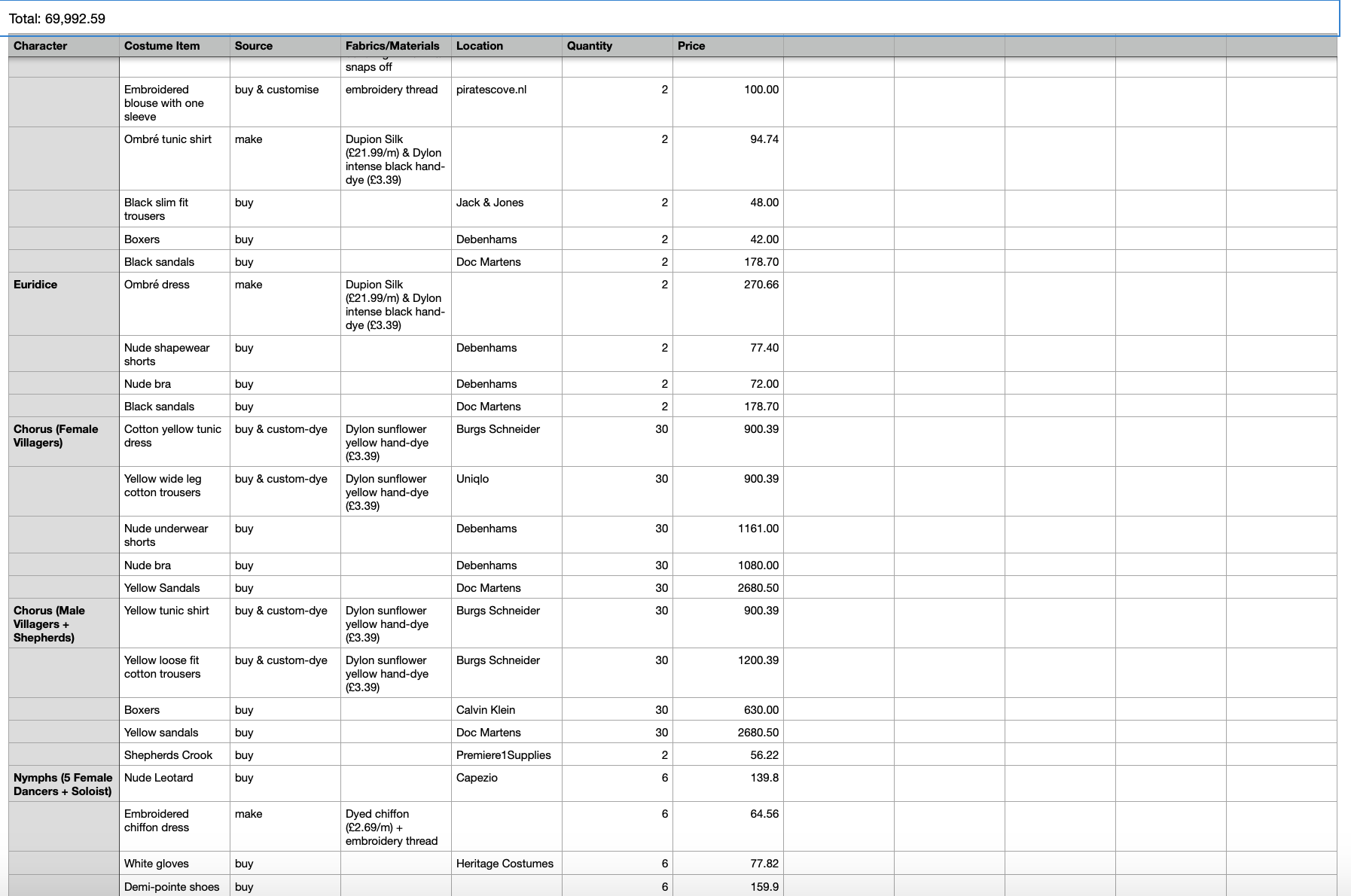
NEXT: OUTCOME ︎︎︎
© Jida Akil 2025